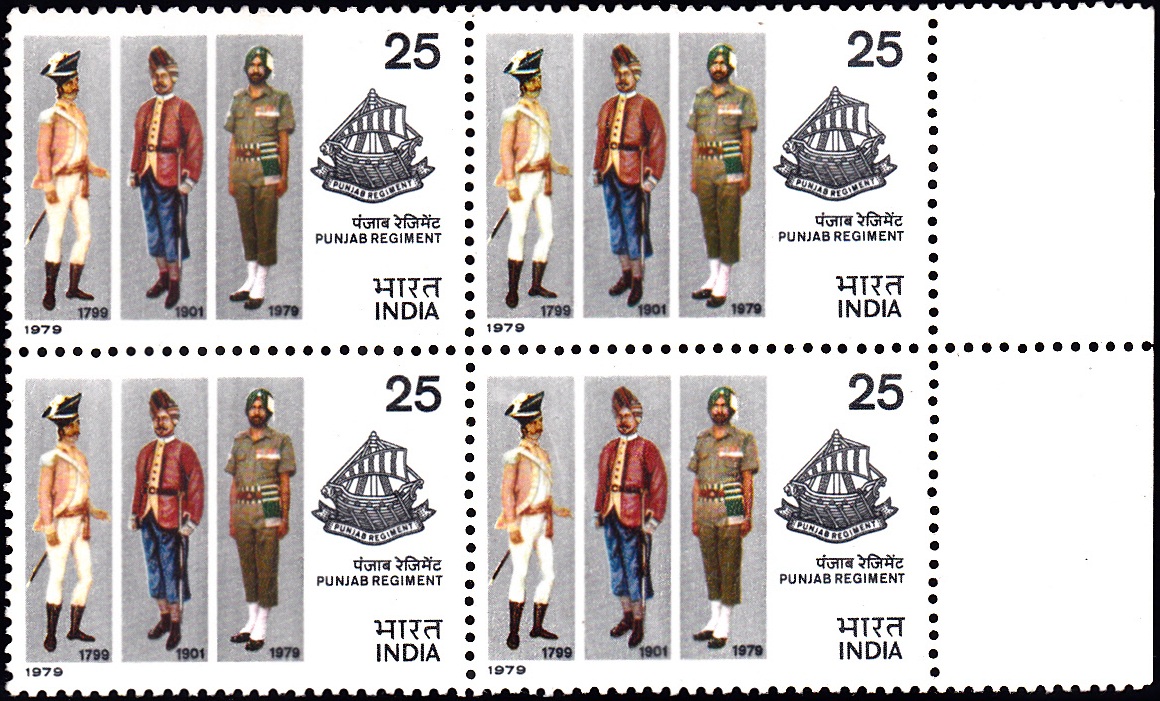
Punjab Regiment
A commemorative postage stamp on the 4th Reunion of the Punjab Regiment (India), most senior regional infantry regiment of Indian Army :
Issued on Feb 20, 1979
Issued for : The P & T Department is proud to commemorate the oldest member of the Indian Infantry, the Punjab Regiment, by the issue of a special postage stamp on the occasion of its Fourth Reunion after Independence.
Design : Shri Charanjit Lal
Type : Block of 4 Stamps, Mint Condition
Colour : Multicolour
Denomination : 25 Paise
Overall size : 3.91 X 2.90 cms.
Printing size : 3.55 X 2.54 cms.
Perforation : 13 X 13
Watermark : Unwatermarked paper
Number printed : 30,00,000
Number per issue sheet : 35
Printing process : Photogravure
Printed at : India Security Press
About :
- Army, the oldest and largest of India‘s three fighting services, is built around the soldier who fights on foot with a gun in his hand. These foot soldiers are called Infantry and they form the biggest part of the combat strength of the Army. Our Infantry soldiers are the proud inheritors of the traditions of the old regiments of the British Indian Army as well as those of the erstwhile Indian State Forces.
- Modern Indian Infantry traces its origin to the middle of the 18th century when the East India Company re-organised its field forces. Of the Battalions that were raised at that time, few have survived as continuous entities. The oldest surviving representative of these Infantry units is the Punjab Regiment.
- The Punjab Regiment of today has seen many changes of organisation, class composition and nomenclature during its long history. Its four senior Battalions were raised between 1761 and 1776. From Coast Sepoys they became Carnatic Battalions, Madras Battalions, Madras Native Infantry, Madras Infantry, Punjabis, 2nd Punjab Regiment and finally Punjab Regiment. Originally manned by South Indian Jawans the Regiment is now composed of 50% Sikh and 50% Dogras. Thus in two centuries the Regiment has covered recruiting grounds ranging from Kanyakumari to Himachal.
- After Independence, the Regiment welcomed to its fold the veteran Infantry Battalions from the States of Jind, Nabha and Patiala while contributing two of its own senior battalions to the newly-raised Parachute Regiment and the Brigade of Guards. During the last twenty-five years the Regiment has expanded considerably to keep pace with the growing strength of the Army.
- During 186 years of its existence before Independence the Regiment fought valiantly in India and overseas and won many battle honours and numerous gallantry awards including a Victoria Cross.
- Since Independence, the Regiment has fought with its traditional determination and heroism in all the major operations undertaken by the Indian Army. Of its memorable exploits, the part played by the 15th Battalion (1st Patiala) in the capture of Zojila in October 1948 is outstanding. The unit held picquets at heights of 14,000 feet. One of these, manned by Naik Chet Singh and 13 men was attacked by the enemy with mortars and machine guns. Eight of his Jawans were wounded but Chet Singh and his men fought a seven hour battle with such skill and determination that the raiders retired leaving behind 36 dead. One Punjabi Company located the enemy gun positions and attacked it at the point of bayonet killing the entire gun crew and capturing a 3.7 inch mountain gun. For this single operation the Battalion was awarded 6 Mahavir Chakras and 13 Vir Chakras. The Regiment has distinguished itself during the Hyderabad Police Action, the Chinese Aggression of 1962, and the Indo-Pak conflicts of 1965 and 1971. The honour of capturing the formidable Ichhogil Canal in two different sectors during the 1965 operations goes to the soldiers of this Regiment. Among other acts of valour in the Indo-Pak conflicts of 1971, the action of a Punjabi Company in holding out against the massive tank force at the isolated locality of Loungewala will be remembered for ever. The Regiment has Jhangar, Zojila, Dograi, Barki, Kali Dhar and Haji Pir, emblazoned as Battle Honours on its new colours.
- The history of the Regimental Crest goes back to 1796 when the 2nd Battalion volunteered to serve overseas in defiance of the taboo against travel by sea. This unit went abroad eight times between 1796 and 1824. To commemorate this unique readiness to serve wherever required, the Regiment was given the “Galley” (warship using sails and oars) as a badge with the motto “Khushki-Wa-Tari” (By land and sea). This emblem was subsequently adopted as the Regimental crest. The new Hindi version of the old motto is “Sthal-Wa-Jal“.
- As may be expected from such a group of physically fit and agile soldiers, the Regiment has an excellent record in the field of sports, particularly in Hockey and athletics. The Regiment is proud of its Major Dhyan Chand, the Hockey Wizard, and such athletics aces as Subedar Dhanna Singh, Subedar Harnek Singh, Naib Subedar Sardara Singh and Capt. J. S. Sandhu.


 Issued by
Issued by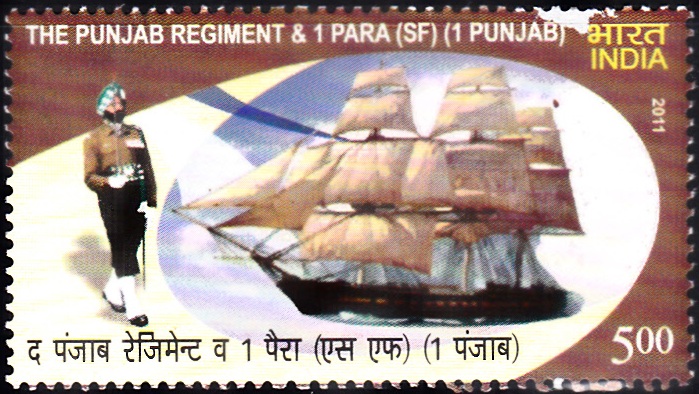
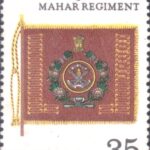


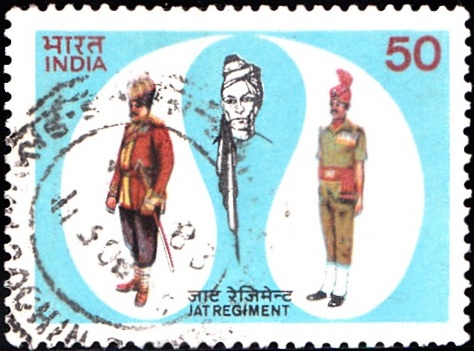
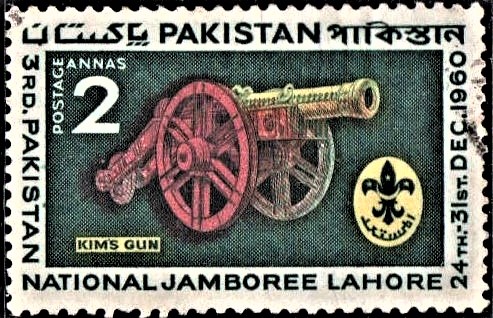
[…] Battalion of the Punjab Regiment is a part of the bigger family of Punjab Regiment, the oldest regiment of the Indian Army. The […]
[…] Madras Native Infantry was reduced by 20 battalions and another 17 were converted into units of the Punjab Regt and Gurkha […]